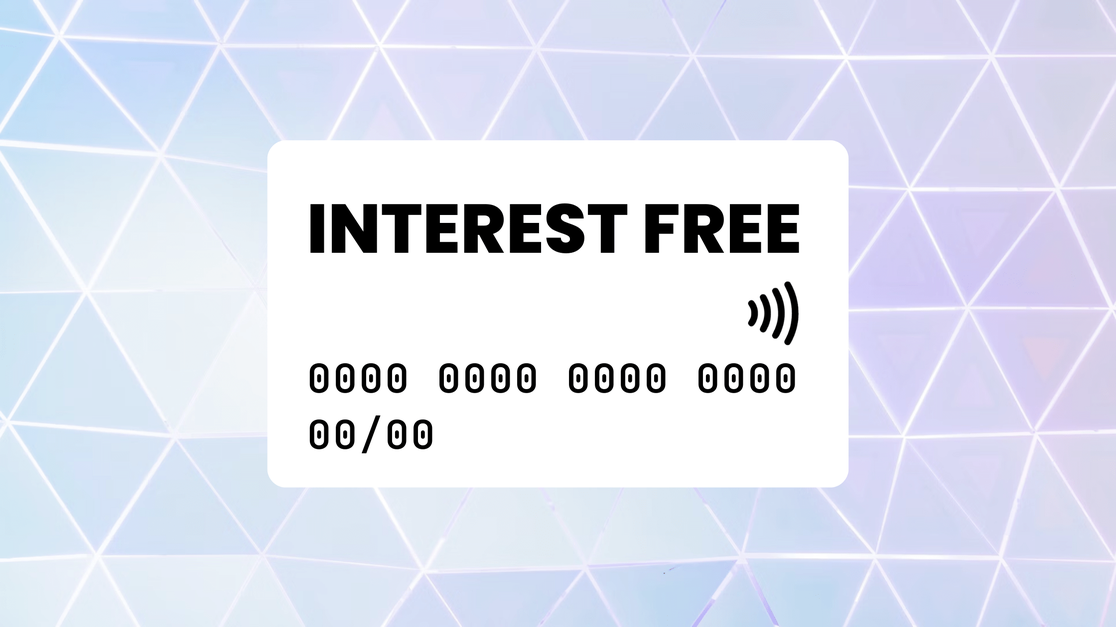There are a number of different types of interest-free credit cards in Australia.
Scroll down for details on credit cards with introductory interest-free offers on purchases and balance transfers, plus details on credit cards with no interest at all.

Types of interest-free credit cards
Want to spread the cost of a large purchase?
Credit cards with introductory interest-free purchases
Some credit cards come with an introductory interest-free offer on purchases. This means there will be no interest applied to purchases made in the introductory period, which can last for well over a year on some cards.
These credit cards are an option to finance a larger purchase and can save hundreds of dollars in interest if you plan on paying off the balance over time.
Once the introductory interest-free period ends, any balance remaining will revert to a higher interest rate (usually the ongoing rate charged for purchases).
Although you can make just the minimum monthly repayment throughout the introductory period, it would be better — and cheaper in the long run — to pay off more every month. Ideally there would be no balance left owing once the introductory offer ends.
Pros
- Pay no interest on purchases, often for a year or more.
- Spread the cost over time. Use the interest-free period to repay the balance and improve your cash flow.
Cons
- You could get into debt. It's possible to spend on the card and only make the minimum repayment each month.
- Interest-free revert rate. Interest on whatever balance remains after the introductory period end will revert to a higher rate.
Want to cut the interest rate on existing debt?
Credit cards with introductory interest-free balance transfers
Interest-free credit card balance transfers are one of the best-known types of interest-free credit card.
Instead of paying interest on your debt, you can use one of these cards to consolidate debt from existing credit cards, store cards, and charge cards at 0% interest.
In addition to the money saved on interest, you can simplify your finances and save on annual fees if you choose to close your old cards.
During the introductory period, which varies between cards and often lasts two years or more, you will still have to pay at least the minimum monthly repayment. This is typically 2 - 3% of your balance. However, doing so won't get you out of debt any time soon.
Pros
- Save a lot of interest. With interest rates averaging around 19 - 20%, transferring debt from your credit, store, and charge cards can save a considerable amount of money.
- Use the interest-free period to pay off debt. With less spent on interest, you can clear your balance faster.
- Consolidation simplifies your finances. Apart from the interest saved, closing old cards means fewer accounts to manage and can save on annual fees.
Cons
- Some cards charge a transfer fee. This is usually about 2% of the amount being transferred.
- You could just make minimum monthly repayments. This means you'll be left with a balance at the end of the balance transfer period.
- The balance transfer rate. This varies between cards, but will be either the purchase or cash advance rate. It applies to any balance left after the introductory interest-free balance transfer period has ended.
Looking for an Afterpay replacement?
Credit cards with no interest
With Afterpay and other buy now pay later services challenging credit cards, some banks introduced a new type of credit card: the no interest credit card.
No interest credit cards are a hybrid of a no-frills credit card and buy now pay later account, combining the best of both.
Instead of interest, these cards charge a monthly fee of around $10 — but usually only when you have used the card.
Credit limits for these cards are low, so while you can carry a balance over to the next month, it's hard to build up more debt than you can manage.
Pros
- Monthly fee instead of interest. Usually the fee is only charged if you've used the card. A flat fee means you know what it will cost each month.
- Low fees (apart from the monthly fee). Usually these cards have no annual fee and no fee for transactions made in a foreign currency.
- Build your credit. Unlike Afterpay, credit cards report to the credit bureaus. This can help establish your credit worthiness if you pay on time.
Cons
- Relatively limited choice. So far, only a small number of banks offer a no interest card.
- No perks or benefits. For some people, a simple credit card is preferential. But if you want balance transfers and rewards, these are not for you.
- Low credit limits. This is as much a benefit as it as a con since a low limit means you can't get too deep into debt.
If you can pay the balance in full each month
Credit cards with up to 55 days interest-free
Interest-free days are when you can make purchases without incurring interest charges during your credit card statement cycle. The number of interest-free days can vary depending on the credit card, but typically ranges from 44 to 55 days.
To get interest-free days, you must pay your balance in full — excluding any introductory purchases or balance transfer amounts — by the due date each month. The actual number of interest-free days you receive depends on the timing of your purchases within your statement period.
If you do not pay off the entire amount owed, you will not be eligible for interest-free days during that cycle and will be charged interest on the outstanding balance. Pay your full closing balance by the due date in the next statement cycle to regain interest-free days.
Pros
- Save money. Make purchases without paying interest.
- Flexibility. Buy now and pay later, making it easier to manage your finances.
Cons
- Only available if you pay off the balance in full. Not everyone can afford that.
- Limited to purchases. Cash advances get no interest-free days.

